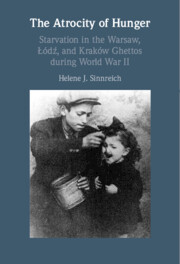
-
- You have access
- Open access
- Cited by 1
-
Cited byCrossref Citations
This Book has been cited by the following publications. This list is generated based on data provided by Crossref.
Barinov, Igor I. 2024. P. Markiewicz. Unlikely Аllies: Nazi German and Ukrainian Nationalist Collaboration in the General Government During World War II. Purdue University Press, 2021. 347 p.. Slavianovedenie, p. 136.
- Publisher:
- Cambridge University Press
- Online publication date:
- February 2023
- Print publication year:
- 2023
- Online ISBN:
- 9781009105293
- Creative Commons:
-
This content is Open Access and distributed under the terms of the Creative Commons Attribution licence CC-BY-NC-ND 4.0 https://creativecommons.org/creativelicenses


